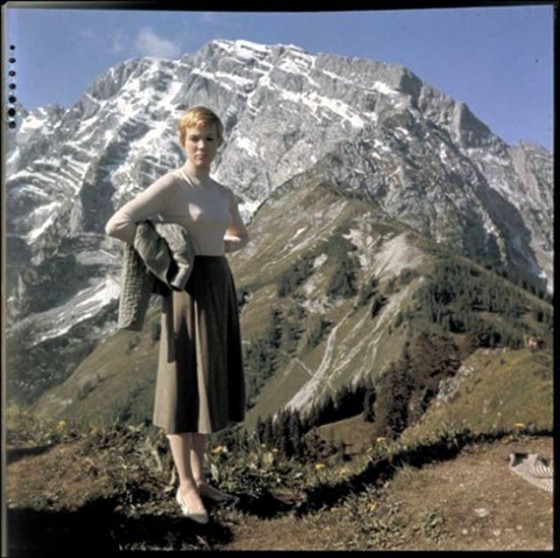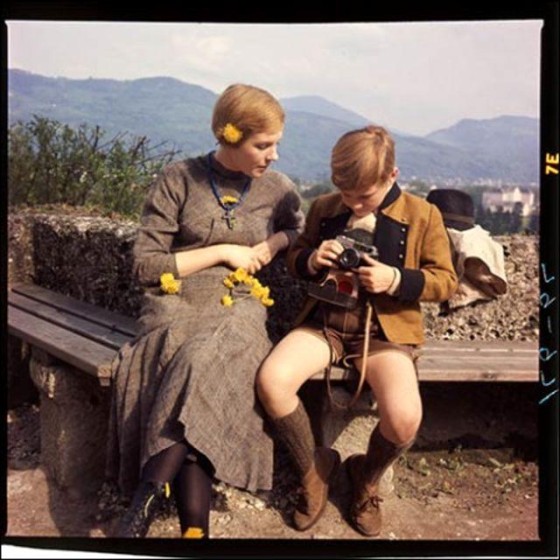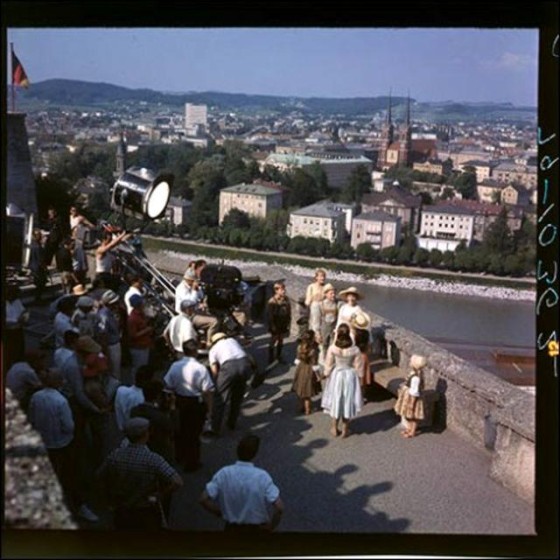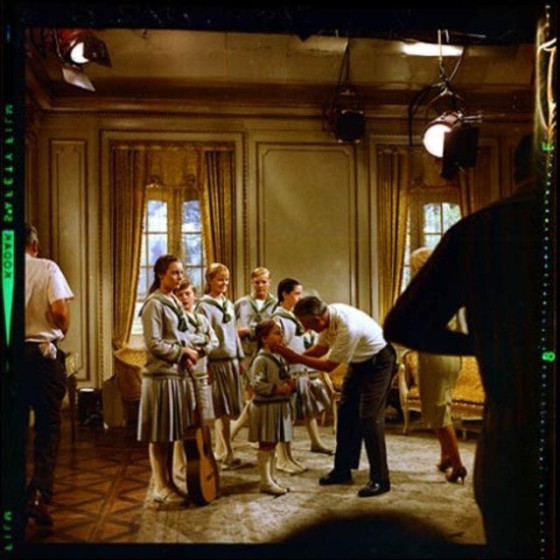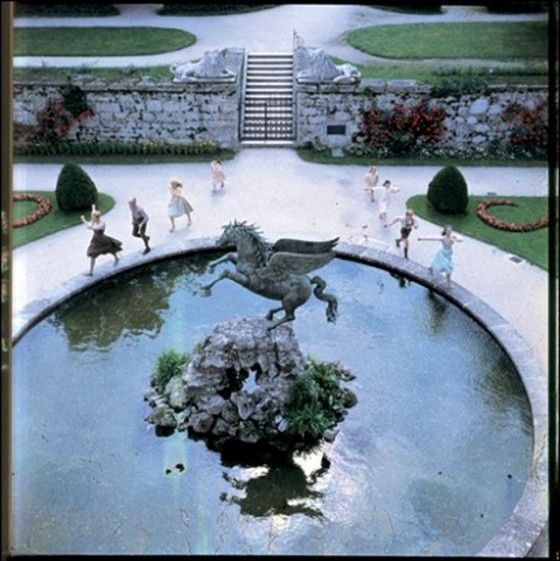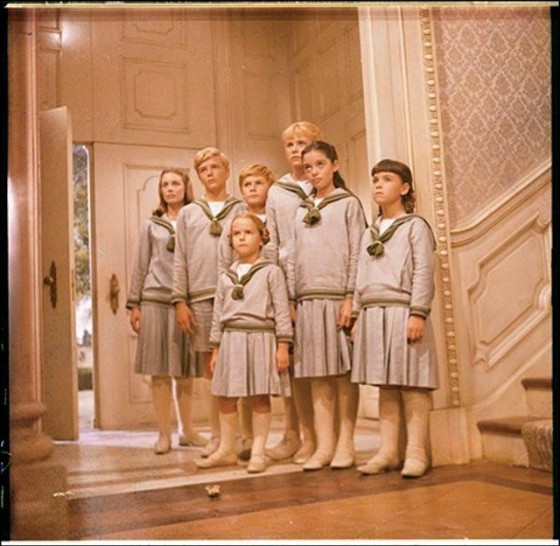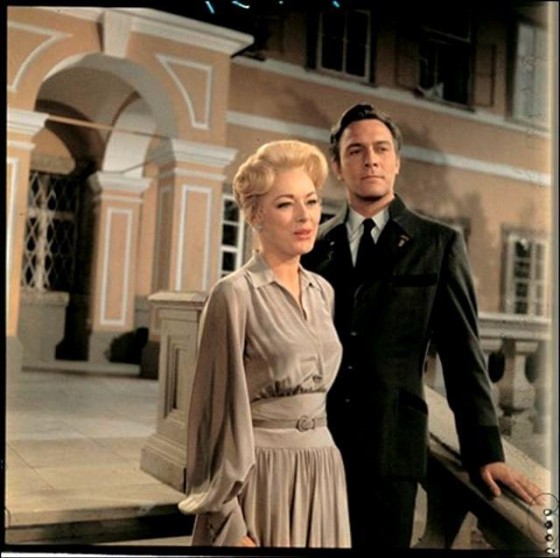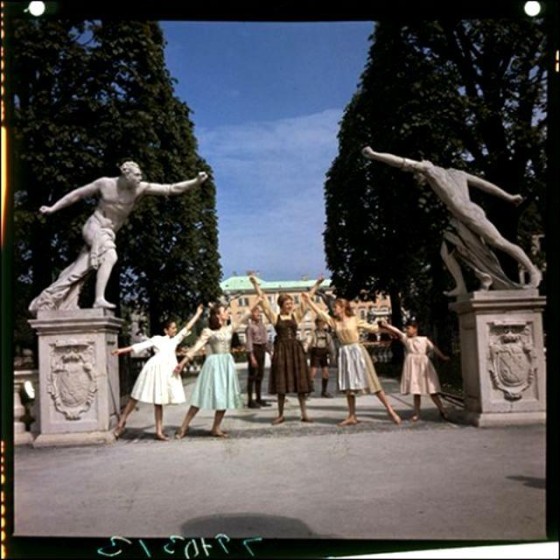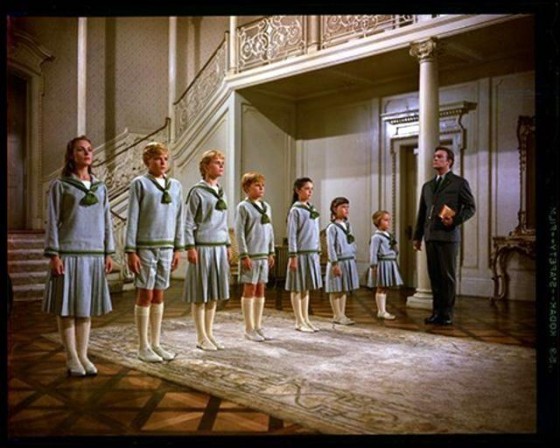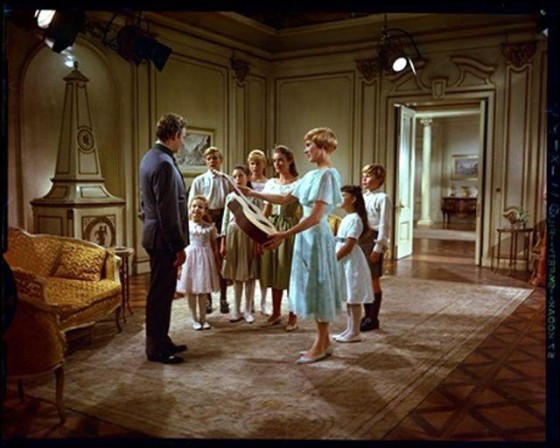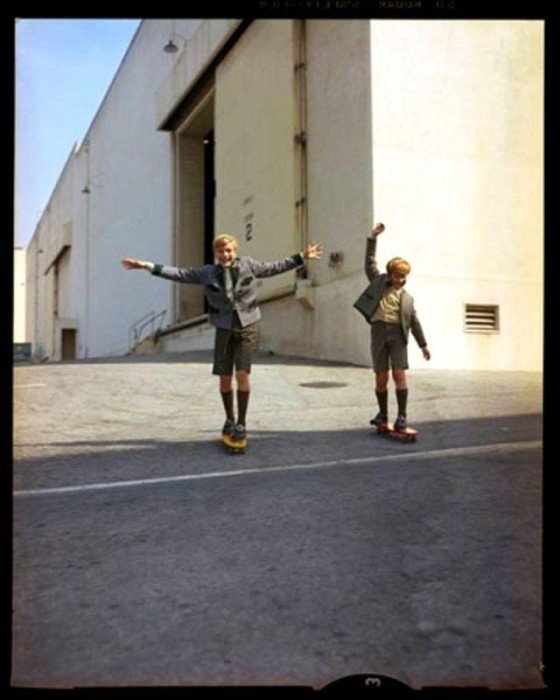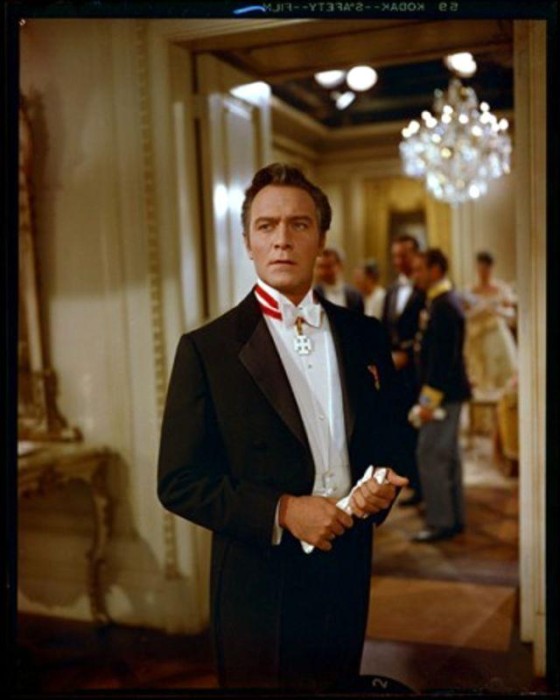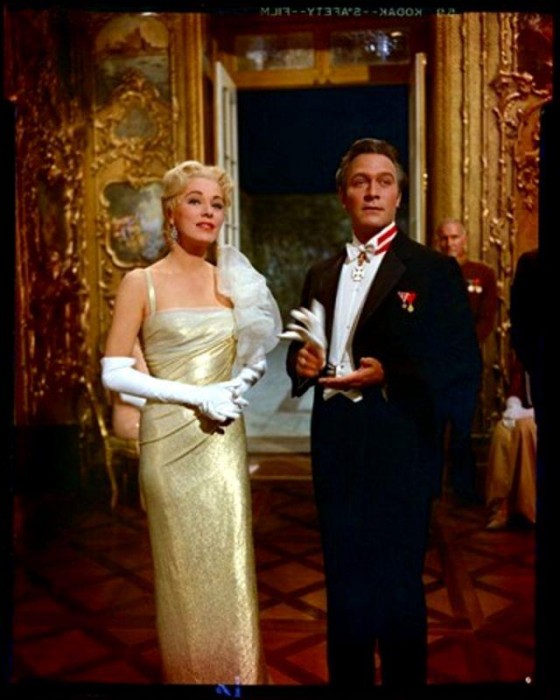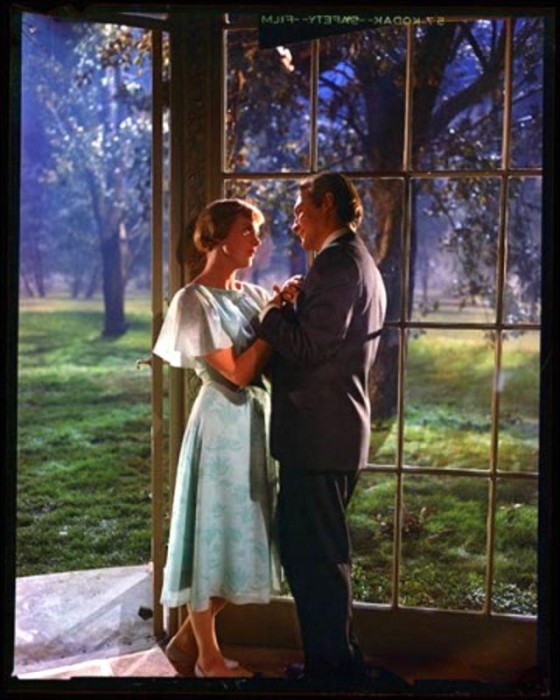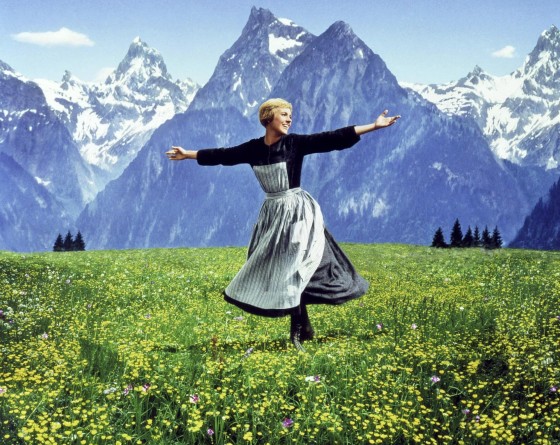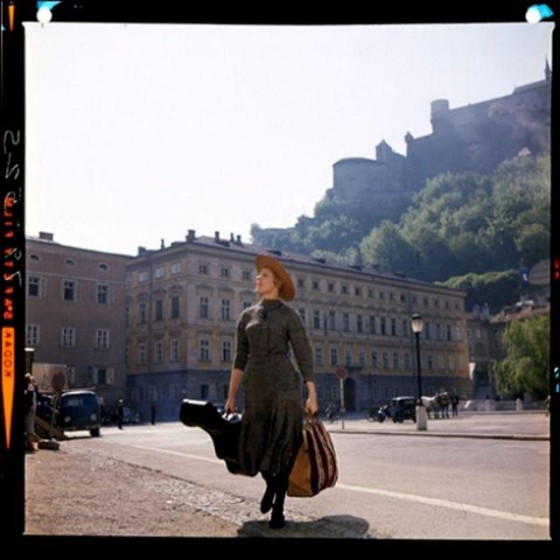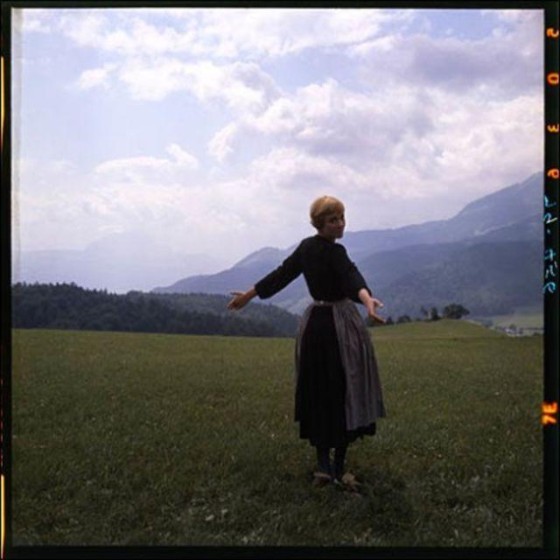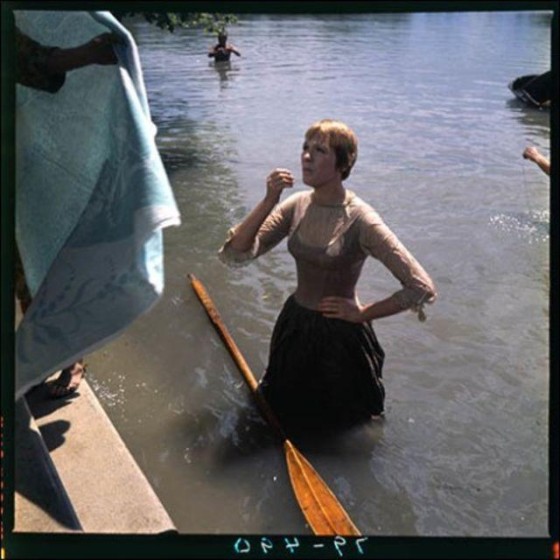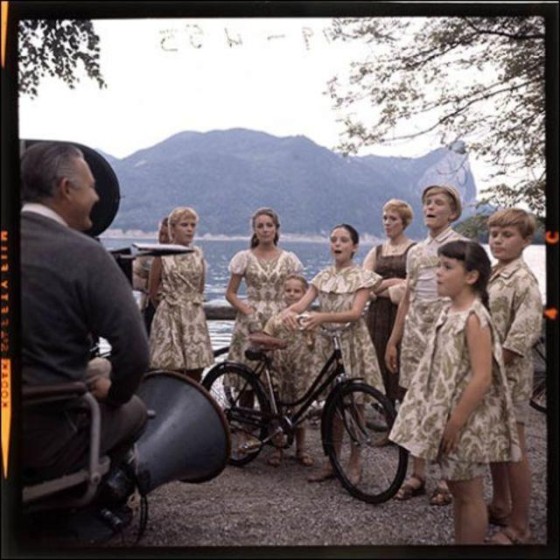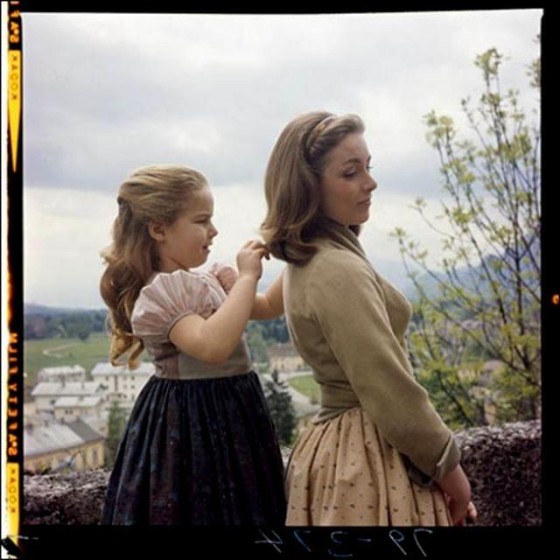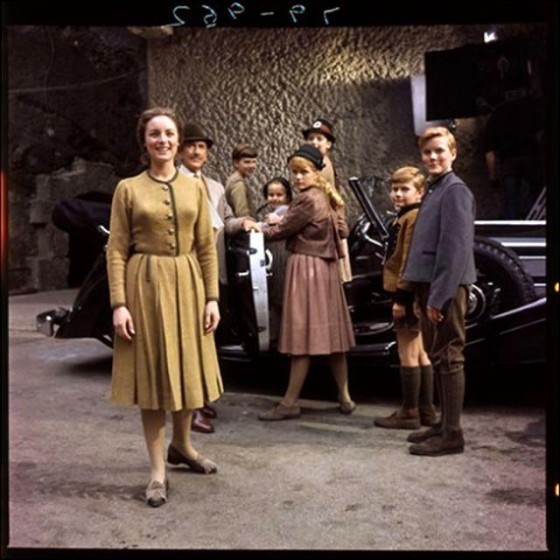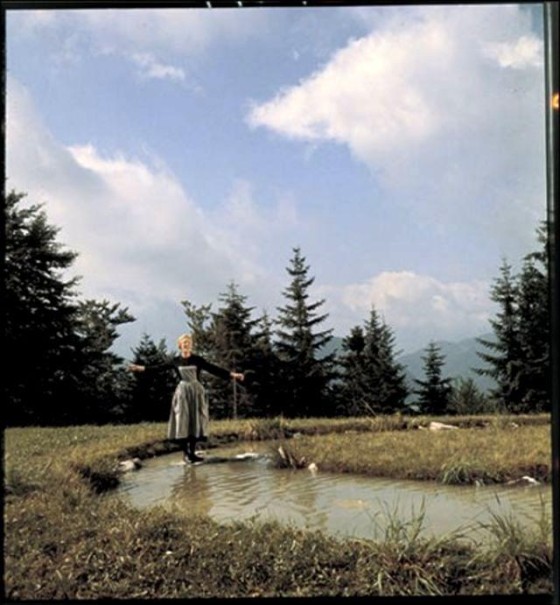Principal photography began on March 26, 1964, at 20th Century Fox studios in Los Angeles, where scenes from Maria’s bedroom and the abbey cloister and graveyard were filmed. The company then flew to Salzburg, where filming resumed on April23 at Mondsee Abbey for the wedding scenes.
From April 25 through May 22, scenes were filmed at the Felsenreitschule, Nonnberg Abbey, Mirabell Palace Gardens, Residence Fountain, and various street locations throughout the Altstadt (Old Town) area of the city. Wise faced opposition from city leaders who did not want him staging scenes with swastika banners. They relented after he threatenedinstead to include old newsreel footage featuring the banners. On days when it rained, a constant challenge for the company, Wise arranged for scenes to be shot at St.Margarethen Chapel and Dürer Studios. From May 23 to June 7, the company worked at SchlossLeopoldskron and an adjacent property called Bertelsmann for scenes representing the lakeside terrace and gardens of the von Trapp villa.
From June 9 to 19, scenes were shot at Frohnburg Palace, which represented the front and back façades of the villa.Karath could not swim, and was in danger during the boat capsize scene. The “Do-Re-Mi” picnic scene in the mountains was filmed above the town ofWerfen in the Salzach River valley on June 25 and 27. The opening sequence of Maria on her mountain was filmed from June 28 to July 2 atMehlweg mountain near the town of Marktschellenberg in Bavaria. The final scene of the von Trapp family escaping over the mountains was filmed on theObersalzberg in the Bavarian Alps.
The cast and crew flew back to Los Angeles and resumed filming at Fox studios on July 6 for all remaining scenes, including those in the villa dining room, ballroom, terrace, living room, and gazebo. Following the last two scenes shot inthe gazebo—for the songs “Something Good” and “Sixteen Going on Seventeen”—principal photography concluded on September 1, 1964. A total of eighty-three scenes were filmed in just over five months. Post-production work began on August 25 with three weeks ofdialogue dubbing to correct lines that were ruined by various street noises and rain.
The Sound of Music was filmed in 70 mm Todd-AO by Ted McCord and produced withDeLuxe Color processing. Aerial footage was photographed with an MCS-70 camera. The sound was recorded on 70 mm six-track using aWestrex recording system.The sets used for the film were based on the storyboards of sketch artist MauriceZuberano, who accompanied Wise to Austria to scout filming locations in November 1963. Wise met with the artist over a ten-week period and explained his objective for each scene—the feeling he wanted to convey and the visual imageshe wanted to use. When Zuberano was finished, he provided Wise with a complete set of storyboards that illustrated each scene and set—storyboards the director used as guidance during filming.Zuberano’s storyboards and location photos were also used by art director Boris Leven to design and constructall of the original interior sets at Fox studios, as well as some external sets in Salzburg.
The Sound of Music was released on March 2, 1965, in the United States, initially as a limited roadshow theatrical release. Although initial critical response to the film was mixed, it was a major commercial success, becoming the numberone box office movie after four weeks, and the highest-grossing film of 1965. By November 1966, The Sound of Music had become the highest-grossing film of all-time—surpassing Gone with the Wind—and held that distinction for five years. The film was just aspopular throughout the world, breaking previous box-office records in twenty-nine countries. Following an initial theatrical release that lasted four and a half years, and two successful re-releases, the film sold 283 million admissions worldwide and earneda total worldwide gross of $286 million.
The movie is considered to be one of the greatest productions of all time.


